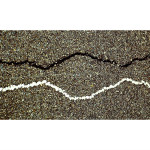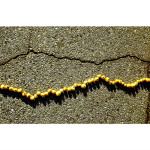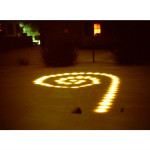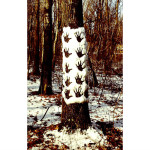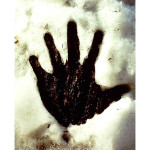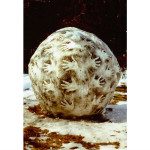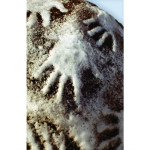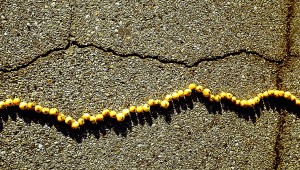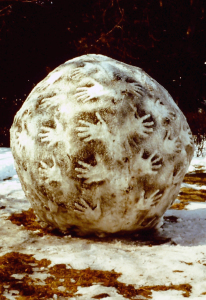Following my direct carving sensibility, I began using the materials at hand to create guerrilla installations that highlighted the characteristics of a place. Through repetition, process became ritual.
I don’t know if you need to have 10,000 hours of practice to achieve success as Malcolm Gladwell contends, but I do agree with the underlying idea that repetition and mastery go hand in hand. As a soccer coach, I learned quickly that the difference between a good practice and a bad practice could be measured by the number of touches each player had with a ball. The same is true in the art making process. You learn to think with your hands and the more you touch, and actively engage with a medium, the more your thinking will evolve. So the real challenge for a soccer coach, an art teacher, or an artist is to establish practices that optimize the number of touches. For me, one of the answers was guerrilla installations.
Sometimes you can be constrained by precious materials or precious thinking. To avoid this creative paralysis, don’t focus on making something precious, just focus on making something. And after doing this for a while step back and reflect on the patterns and trends in your work. Let some mindless making set your course. This was my thinking as I would set off on walks with the intent of making as many “installation sketches” as possible before I returned. I walked with only one rule—only use the materials at hand.
These walks were actually a lot like fishing. Most of the time was spent casting, trying here, trying there, but bringing in nothing. This was not wasted time though. There is value in just practicing to cast and there is value in learning to read the environment. Occasionally, you get a bite. Most of the time these were too small to be significant, but sometimes you get lucky, and you land something you want to share.
In hindsight, I can now see seeds of ideas for later installations. For example, stacking pebbles or berries to mirror a crack in the asphalt or using a string of ornamental lights under the snow to connect landscape features are the same types of lines you see in the installation Stacking wood from the closest tree to the next closest tree, to the next . . . or the stacking a line installations at Crane Beach and Shelburne Farms.
In the course of my walks I stumbled upon the largely overlooked historic site Brook Farm, a short-lived utopian community founded on transcendental principles. In the woods and fields nearby, I created ritualistic installations that evoked the trancendental principles of individual expression, spirituality, and a connection to the land. Research into this site helped me see how the cultural and historic significance of a site could be as inspirational as the materials at hand and it established the groundwork for future site-specific installations. And, of course, these rituals planted the seeds for the Ritual Trees installation at the Forest Hills cemetery.
Just as I happened upon Brook Farm in the course of these guerrilla installations, I also happened upon the Land Art community.
It is important to develop artistic fluency and stamina. As a student and as a teacher, I too often became bogged down in making one grand project a semester. This approach undermines fluency and stamina. Impromptu land art installations can help you build fluency and stamina—and get you thinking with your hands. So, engage your students in making a series of guerrilla land art installations using only the materials at had.
Through Internet images introduce your students to the works of established land art artists, or, even better, have the students use the list below to pull the images together. At this stage focus on the materials more than the artists and let big bold images do most of the talking. Encourage the responses many of these images invariable evoke. Here are a few artists you may want to include; Andy Goldsworthy, Nils-Udo, Andres Amador, Jim Denevan, Walter Mason, Richard Shilling, Dietmar Voorwold, Chris Booth, Tim Johnson, Strijdom van der Merwe, Urs-P. Twellman, Richard Solomon, and Brad Schwede
While each environment offers unique materials to work with on varying scales, what are some of the common threads that unite this work? Discuss the temporal nature of the work, its soft touch on the environment, the value of free experimentation and failure, and the importance of documentation.
Then, negotiate with students a set time period and a set number of “installation sketches” to complete. (for example, 3 sketches a day over a weeks time period produces 21 pieces.) Focus on the doing, not on the thinking. Have them document and review their work and identify 3 or 4 that they like the most.
I know this is a bit controversial, but as an art teacher I didn’t mind if my students initially copied a master. The selection of the master and the work they focused on involved them in following their intuition. Plus, it made them look even deeper at a specific work. And, in the end, their preferences and ability took them in different directions and that offered rich ground for further reflection. Since they will be producing so many pieces here, I would let them begin by copying a master. Invariably, as they learn to think with their hands, their personal preferences and new understanding will take them down their own personal path.
In small groups or as an entire class, exhibit the documentation of the land art and have each artist discuss what they liked and what they learned. If you want to go a little bit further have students brainstorm a list of descriptive words and phrases that describe their pieces. Pairs and small groups may make this a more fluid process. Then have them consider how those words actually describe themselves. Because students are being responsive and not overthinking (not self-censoring) their character traits and unique sensibility may rise to the surface.
Add to the discussion by sharing your students’ guerrilla sculptures and your teaching strategies and insights.

